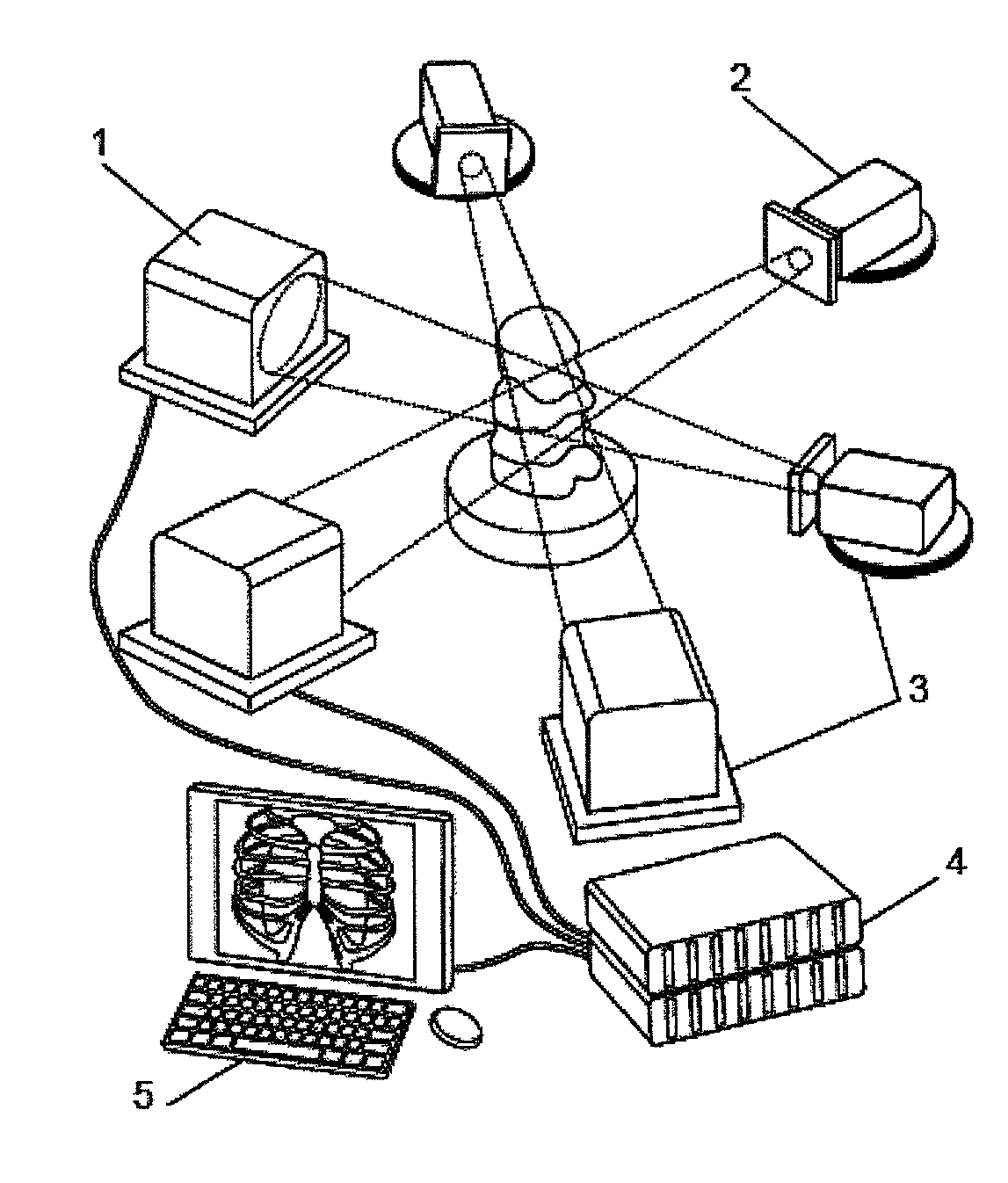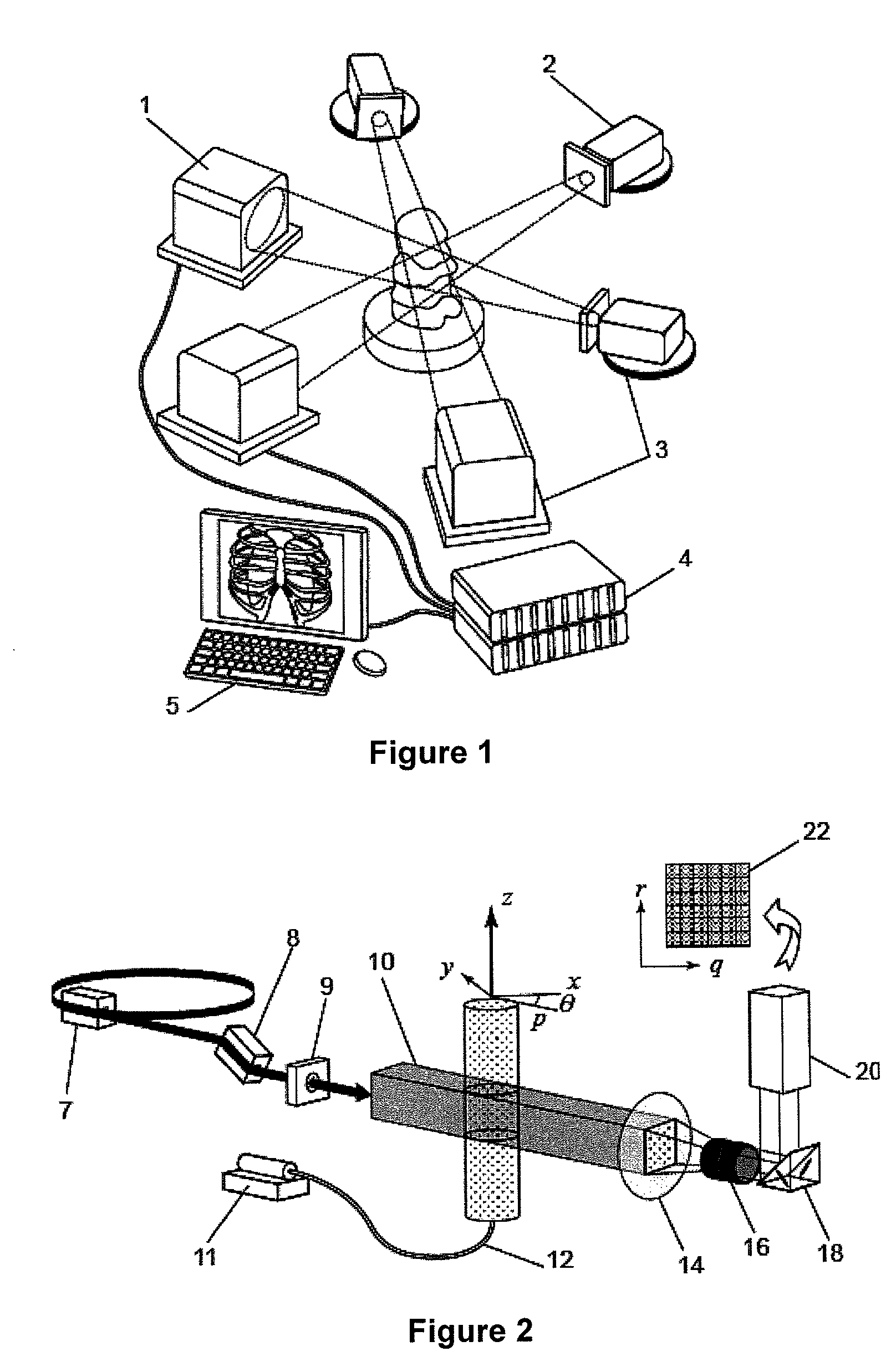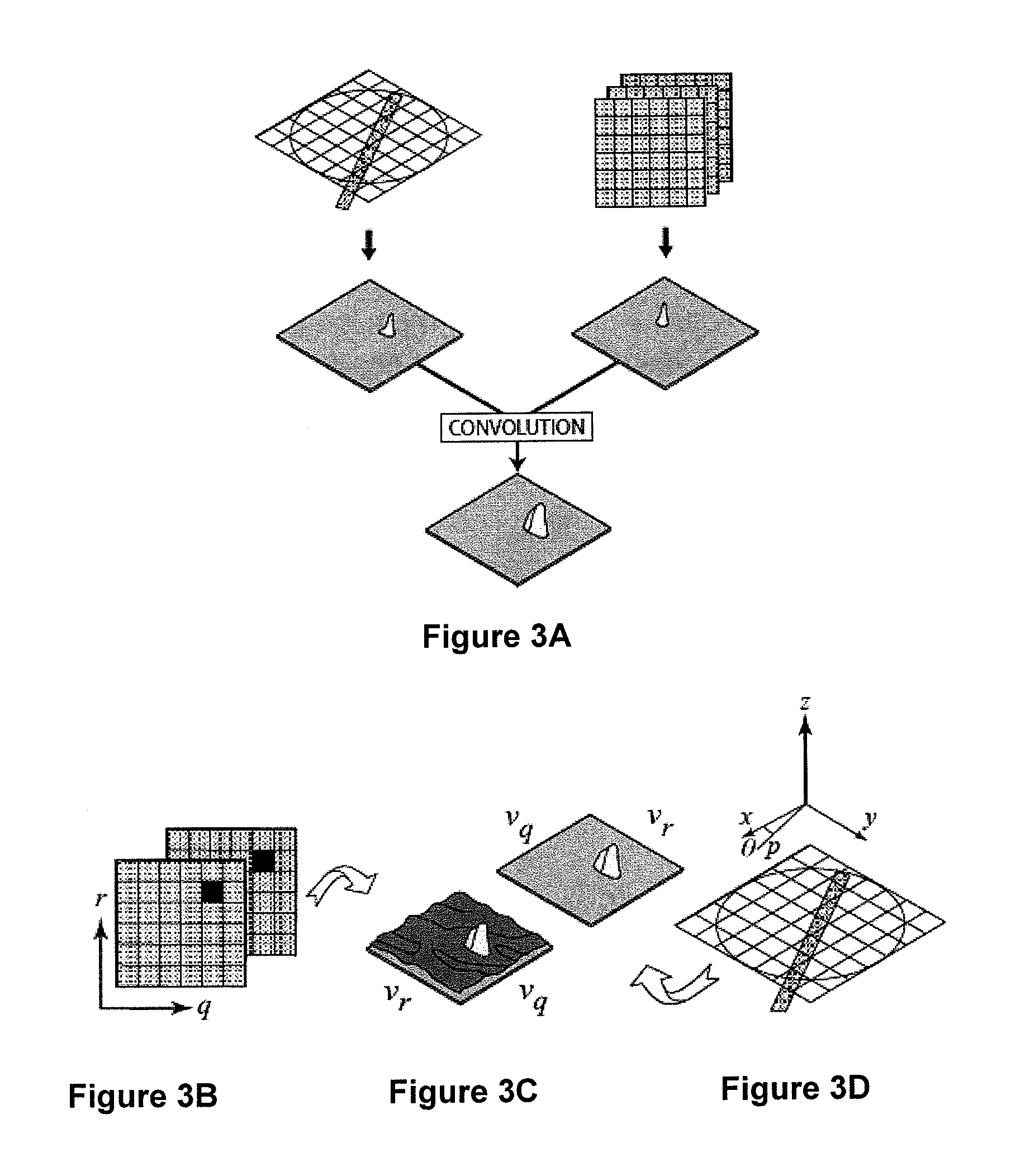Partical image velocimetry suitable for X-ray projection imaging
a technology of x-ray projection and image velocity, applied in the field of movement imaging, can solve the problems of poor spatial and temporal resolution, limit the application of in vivo flow analysis techniques to piv techniques, and limit the application of piv techniques to optically transparent samples
- Summary
- Abstract
- Description
- Claims
- Application Information
AI Technical Summary
Benefits of technology
Problems solved by technology
Method used
Image
Examples
example 1
[0256]In this example the method of the present invention has been applied to the measurement of a strongly 3D flow.
[0257]The relevant imaging setup is shown in FIG. 1. The monochromatic beam in this case passes through a particle-seeded fluid (hollow glass spheres in glycerine). X-rays are slightly refracted at the interfaces between materials. The transmitted and refracted rays are allowed to propagate and interfere before being co-converted into visible light by the scintillator. This is then imaged using a high-speed detector and visible light optics, resulting in a phase contrast projection image. The image results from the superposition of interference fringes generated by the particle-liquid interfaces creating a dynamic speckle pattern that faithfully follows the particles.
[0258]Unlike visible light based imaging systems, in which images contain focus or holographic information from which depth can be inferred, the transmission nature of CTXV results in 2D volumetric project...
example 2
[0266]In this example experiments are described which demonstrate the application of CTXV to the simultaneous measurement of structure and velocity. The method of the present invention was used with a high resolution medical imaging beam-line (BL20XU) on a Spring-8 synchrotron at Hyogo, Japan set up as shown in FIG. 2. The source to sample distance of 245 meters provides highly coherent X-rays for phase contrast imaging. A Si-111 double crystal monochromator was used to provide a monochromatic beam energy of 25 KeV.
Sample
[0267]The sample comprised an optically opaque plastic arterial model, with an average diameter of 950 μm, manufactured using a 3D-printing technology. The model was manufactured out of the Objet™ FullCure® acrylic-based photopolymer material. The high resolution technique, with a layer thickness of 16 μm, ensured the models were accurate on the small scale being investigated. The geometry was chosen to mimic a stenosed artery, generating a three-dimensional flow fi...
example 3
[0273]In this example a further experiment is described which demonstrate the application of CTXV to the simultaneous measurement of structure and velocity. The method of the present invention is again used with a high resolution medical imaging beam-line (BL20XU) of the Spring-8 synchrotron at Hyogo, Japan.
Sample
[0274]The sample used was an opaque plastic model with a complex three-dimensional geometry (FIG. 7A), manufactured using Object rapid prototyping technology. The test section consisted of a solid cylinder of 14 mm diameter, with a hollow section allowing internal flow of the working fluid. The geometry of the hollow section was constructed as the union of a cone and a helically swept circle, resulting in corkscrew geometry with a decreasing cross-sectional area. The geometry was chosen to exhibit a strongly three-dimensional flow. The working fluid, glycerine seeded with 35 um (nominal) solid glass spheres was pumped through the model at 0.1 ml / min using a syringe pump. Th...
PUM
 Login to View More
Login to View More Abstract
Description
Claims
Application Information
 Login to View More
Login to View More - R&D
- Intellectual Property
- Life Sciences
- Materials
- Tech Scout
- Unparalleled Data Quality
- Higher Quality Content
- 60% Fewer Hallucinations
Browse by: Latest US Patents, China's latest patents, Technical Efficacy Thesaurus, Application Domain, Technology Topic, Popular Technical Reports.
© 2025 PatSnap. All rights reserved.Legal|Privacy policy|Modern Slavery Act Transparency Statement|Sitemap|About US| Contact US: help@patsnap.com



